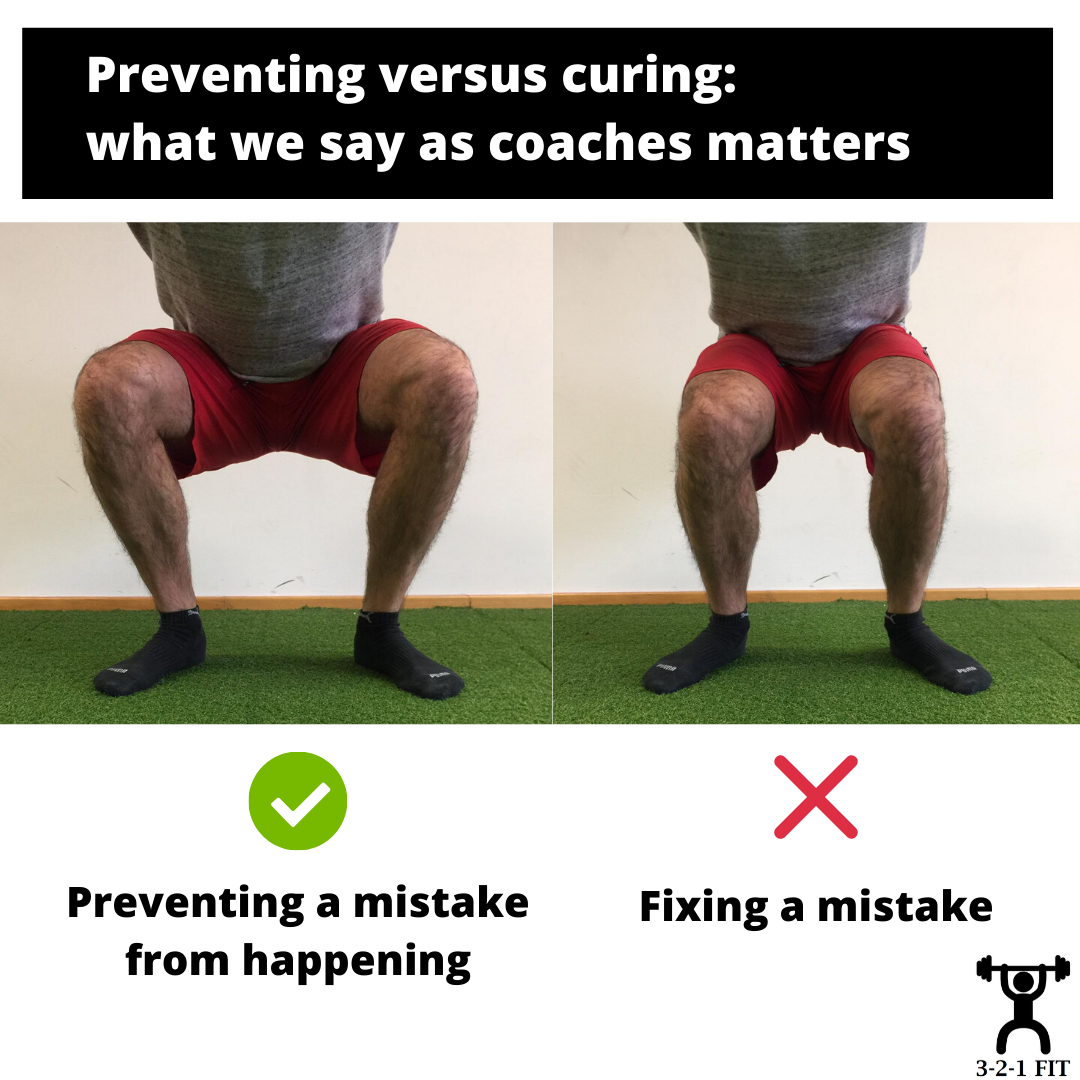|
What we say as coaches really matters.
We tend to work results-oriented as coaches. When you see someone do a squat and the knees come in, the logical thing for a coach is to speak about the desired outcome and ask the athlete to do so. "Keep the knees out" is the logical response. But is this the best way? There is a gigantic difference between telling someone correct a mistake versus trying to avoid the mistake from happening, which is why I prefer the words "Prevent the knees from coming in" over "push the knees out". It's my opinion that by trying to fix movement patterns with quick fixes like this, you are covering up the real problem, which is a lack of neuromuscular control somewhere else. I can ask someone to keep those knees out, but if they don't learn what muscles to engage, the problem will just repeat itself again and again and again, and in different movements as well. Just asking to keep the knees out is a band-aid fix. It's just a fast way to cover up the real problem, which would actually hinder you as a coach to see the problem: it will only pop up under heavy circumstances, where the quick fix has become insufficient. Another problem with these outcome-based cues is that they often only work until a certain load, and in specific situations. The athlete will be able to keep your knees out in a squat, but give them a lunge, stepup, ... and the problem will very often just repeat itself again, since this is a different exercise and situation. Focussing on cues that "prevent" instead of "cure" gives you a number of benefits: - They allow you to set tension and prepare when you are still at your "easy position". An example: it's a lot easier to squeeze the glutes at the top of a squat then to try it when you are at the bottom of a heavy squat. You can't safely correct a movement under heavy load when you're already halfway through the movement. Kelly Starrett describes this as the "tunnel concept" in his famous book "Becoming a Supple Leopard". - They're transferrable to other movements. Pushing the knees out is a typical cue for a squat, but in a lunge, there is only 1 knee that needs to be out, making it a totally different experience. By focussing on a correct brace and tension, you can avoid knee collapse in a lot of other movements. - They teach you more on how your body works. Just asking someone to get those knees out learns the athlete nothing about how their body works. What we say as coaches really matters. Set someone up for longterm success instead of going for the easy but non-repeatable win.
0 Comments
Leave a Reply. |
Fitter in 4 Weken!Wil je die overtollige kilootjes kwijtspelen? werken aan je probleemzones? schrijf je hier dan in voor het gratis. 4 weken programma + wekelijkse tips!
Categories
All
|
Photos from verchmarco (CC BY 2.0), verchmarco


 RSS Feed
RSS Feed